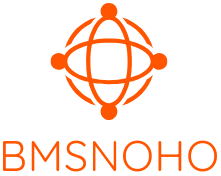Table of Contents
ToggleIn a world where technology evolves faster than a teenager’s mood swings, understanding new innovations is more important than ever. Enter Hdh7B4U, the mysterious yet mighty player in the ever-expanding tech arena. You might be wondering, what on earth is Hdh7B4U? Does it come with a user manual? Spoiler alert: It’s not just a jumble of letters. This innovative technology is revolutionizing industries, and guess what? It’s time to immerse and explore its importance, applications, and the future it holds. Pack your curiosity, let’s unravel the secrets of Hdh7B4U together.
What Is Hdh7B4U?

Hdh7B4U, while it may sound like the name of a secret government project, actually refers to a technological framework or product that bridges several essential functions in digital communication. At its core, it aims to streamline processes, enhance connectivity, and optimize performance across various platforms. This number-letter concoction encompasses numerous elements, including software usability, data transmission efficiency, and user experience design. Understanding Hdh7B4U is akin to unlocking a new level in a video game: It enhances what’s already there and equips users with better tools to tackle challenges.
The Significance of Hdh7B4U in Modern Technology
Hdh7B4U isn’t just a buzzword tossed around at tech conferences and coffee shop debates. Its significance resonates throughout modern technology for several reasons. First, it enhances interoperability among differing systems, ensuring that various technologies can communicate effectively. This intercommunication is particularly vital in an era of increasing digital integration. Second, it supports scalability, think of it as a small tree that can grow into a vast forest when nurtured correctly. During rapid advancements in technology, Hdh7B4U provides a stable foundation for innovation, ensuring that new developments are built on solid ground. Summarizing, its role in modern technology is not just supportive: it’s essential.
Applications of Hdh7B4U Across Different Industries
As diverse as the industries themselves, applications of Hdh7B4U are remarkably varied. In healthcare, for example, it enables sophisticated data management systems that ensure timely access to patient information. When you’re in a medical emergency, every second counts. In the automotive industry, Hdh7B4U supports the development of advanced driver-assistance systems (ADAS), enhancing safety and improving user experience. Besides, the entertainment industry has seen major benefits, with enhanced streaming capabilities and improved user interfaces becoming the norm. Finally, in finance, it helps streamline transactions, ensuring rapid processing and security of sensitive data. Clearly, Hdh7B4U is not just a one-trick pony: it’s a multifaceted tool that can be adapted to meet the demands of various sectors.
Technical Specifications and Parameters of Hdh7B4U
To appreciate the full scope of Hdh7B4U, one must first understand its technical specifications and parameters. This framework typically features robust data encryption techniques, high-speed connectivity options, and a user-friendly interface designed for easy navigation. Its architecture allows for rapid updates which are crucial for maintaining compatibility with emerging technologies. Besides, the scalability options included in Hdh7B4U ensure that organizations of all sizes can leverage its capabilities without a hitch. For tech enthusiasts yearning for the specifics, some parameters include data throughput rates, latency figures, and user capacity limits, all tailored to enhance functionality.
Challenges and Limitations of Hdh7B4U
But, like any vibrant technology, Hdh7B4U isn’t without its challenges. One primary concern revolves around data security: as connections grow more complex, so do the vulnerabilities associated with them. When hackers are always lurking, ensuring safe environments becomes a pressing challenge. Also, the adaptability of Hdh7B4U can lead to issues with standardization, what works for one application may not work for another, creating inconsistency across platforms. Besides, organizations may face a steep learning curve while integrating Hdh7B4U into their existing systems. Even though these challenges, the continuous innovation surrounding it aims to mitigate such limitations, paving the way for improvements.
Future Trends and Developments Related to Hdh7B4U
Peering into the crystal ball, future trends surrounding Hdh7B4U indicate a ripe ground for growth and innovation. As AI and machine learning continue to evolve, one can expect Hdh7B4U to integrate these elements, improving predictive capabilities and user personalization. Also, the concern for sustainable tech solutions is growing: so, future implementations will likely focus on minimizing energy usage while maximizing efficiency. The rise of the Internet of Things (IoT) will also play a significant role, allowing Hdh7B4U to populate smart environments seamlessly. Summarizing, the future looks bright for Hdh7B4U as it adapts to emerging demands and technological advancements.







